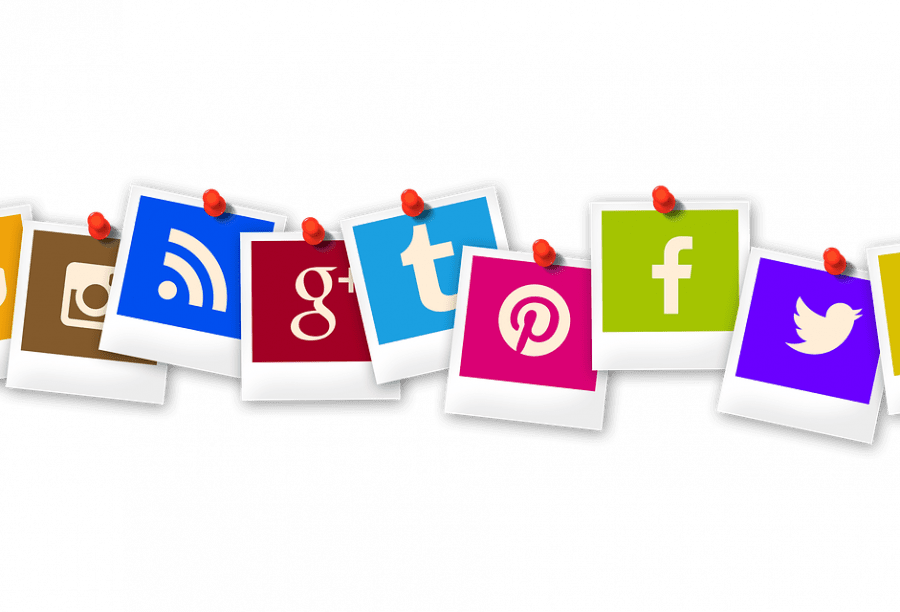
If you run an eCommerce business, we’re sure you’re well aware of the important role social media plays in online shopping. With the influence social media platforms like Facebook, Instagram and Pinterest have on millennial shoppers, it’s not a surprise that 74 percent of consumers make buying decisions based on social media content. As social media networks shift into full-scale sales channels, a new opportunity to source revenue arises for eCommerce brands. We will tackle some social media features for eCommerce in 2019.
Today’s consumers have come to expect a simple and convenient online shopping experience, so it’s no wonder that they’ve turned to their favorite social platforms for shopping purposes. With the ease of customer experience that social platforms can provide, avoiding a social media-driven sales strategy simply isn’t an option for today’s connected consumers. Digital marketers and social media managers alike must develop a social media strategy that fits a digitally-friendly sales model.
Social media eCommerce isn’t beneficial solely for consumers, however; it provides significant benefits for retailers too. The ability to send traffic from social media posts and advertisements has allowed businesses to match consumers with the products and services they sell and can move them through the sales funnel much more quickly than ever before.
Understanding the relationship between eCommerce and Instagram is an essential component of competing in today’s online marketplace. Luckily for eCommerce brands, social media giants including Instagram, Facebook and Pinterest continue to develop and release new features that facilitate social media selling. If you’re an eCommerce brand that has yet to use these four features in your digital strategy, the time is now.
1. Instagram Shoppable Posts And Stories

Instagram initially released its shoppable posts feature in 2016, but continuously updates it within other areas of the app. With 80% of Instagram users following a business account and a global community of over 600 million, shoppable content provides a massive opportunity for those who use it effectively. For example, after launching shoppable posts, eco-friendly children’s clothing company Spearmint LOVE saw a 25% increase in traffic and an 8% increase in revenue due to shoppers on Instagram.
Shopping through a post on Instagram essentially works the same way as its current tagging feature. When a user clicks on a post, they will instantly be able to see the name and price of a product; if they decide to click on the tag, the user will be brought to a more detailed page featuring specific product details, similar items, and other shoppable posts from the brand. Selecting “Shop Now” from the product details view links directly to the business’s website, bringing them to the exact page of the product of interest. More recently, Instagram has released shoppable tags for Instagram Stories, which allows users to access the same function when viewing stories.
Here Is A Great Instagram Resource
2. Facebook Shop Section

Brands with a Facebook Business page can add a shop tab, which allows businesses to list products they’re currently selling and better connect with customers. With Facebook Shop, businesses can add any and all products available on their eCommerce site and even customize merchandise into specific categories based on product type or collection. Customers can easily contact the seller through Facebook Messenger and make specific inquiries on available merchandise,
The Facebook Shop tab seamlessly connects with Facebook’s advertising opportunities and can simply carry out campaigns. Facebook’s dynamic ads option work well for online retailers with a wide variety of products. Instead of creating individual ads for each item in the Shop tab, dynamic ads pull different products from the catalog to display in the ad template, depending on who is seeing the ad.
Online jewelry retailer BaubleBar utilized this strategy and experienced a 200% increase in the average number of purchases per day. The company’s Chief Marketing Officer Ellise Park attests to the power of Facebook Shop “Facebook has allowed us to test and learn using a variety of different audiences, campaign objectives, and ad units to find a sweet spot for the brand. Dynamic ads for a broad audience helped us introduce the brand to new potential consumers.”
3. Pinterest Product Pins

Just this month, Pinterest has announced a total revamp to its Product Pins system. As the company states, “When you see something on Pinterest you’d like to own you should be able to buy it, or something just like it, that matches your unique style.” The update has added dynamic pricing and stock information for thousands of pins, making them easier to shop from the site. Specifically, many Product Pins now feature a shopping bag icon on the photo that links directly to a retailer’s checkout page. Within just a few clicks, consumers can purchase items they find in their feed or search results.
In the past quarter since Pinterest started testing these shopping features, clicks on products to retail sites have increased by 40%. Pinterest has long been used as shopping inspiration and continues to provide a visual representation of new styles, decor, and recipes. Though goods on Pinterest were once solely utilized aspirationally, the updated Product Pins feature now encourages actionable response from users.
After setting your social selling strategy into play, make sure to consistently evaluate it and keep it updated. With new trends and technology constantly on the rise, they’re sure to make an impact on the entire space of social platforms and a successful marketing strategy should be able to quickly respond to change and adapt to a dynamic environment.

